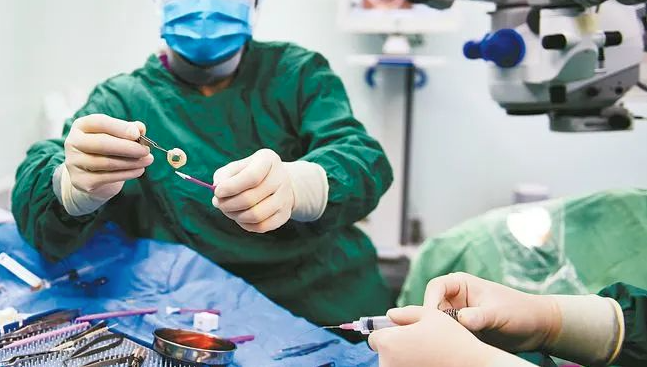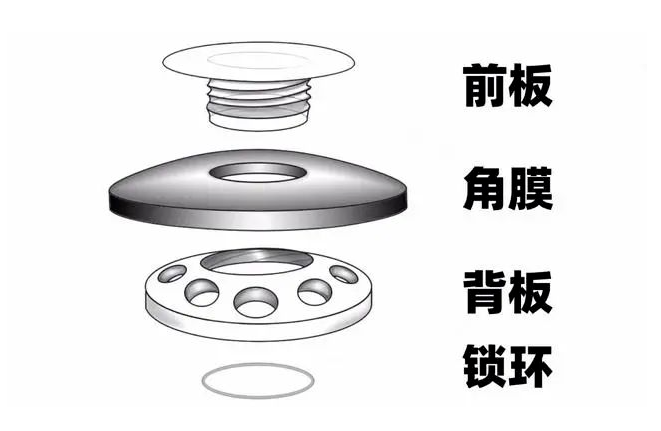Before starting the article, first look at two sets of data.
From 2009 to 2012, with the support of the key consulting and research project of the Chinese Academy of engineering, "Research on social hazards and intervention strategies of infectious keratopathy in China", an epidemiological survey of infectious keratopathy was organized in 10 provinces, districts and cities across the country (a total of 191242 people were sampled).
The survey results show that the prevalence rate of corneal disease is 2.49%. Based on the sixth national census of about 1.3 billion people, there are 32.37 million patients with corneal disease in China.
According to the World Health Organization's global data report on visual disability, corneal blindness is the second blinding eye disease in China, with about 4million patients, and increasing at the rate of 100000 per year.
For the treatment of corneal blindness, although the traditional penetrating allograft corneal transplantation has made great achievements, it can not make all patients with corneal blindness regain vision, for two reasons ☟ ☟

Low corneal donation rate
The annual number of corneal beneficiaries in China does not match the number of people waiting for transplantation. The proportion is about 1:70, that is, only one in 70 people can get cornea.
In this case, the operation is easy to fail
Corneal blindness patients who have developed neovascularization after severe corneal chemical injury, thermal burn and other conditions are prone to rejection after surgery, leading to surgery failure.

The survival rate of penetrating keratoplasty in these patients is only 20% two years after operation. For them, implantation of artificial cornea is one of the best options for vision restoration.
At present, Boston artificial cornea is widely used in the world. In recent years, it has been continuously innovated in design and materials, and the corresponding complications have been greatly reduced.
But everything has two sides, and strengths and weaknesses coexist most of the time.
Although the technology of Boston artificial cornea is constantly innovated, the anatomical failure rate of patients with serious ocular surface damage and autoimmune diseases is still high, and the product structure also has problems.

As shown in the figure, Boston artificial cornea is composed of four parts: front plate, back plate, cornea and lock ring. Its structure is a bit like screws and nuts, with a gasket and cornea sandwiched in the middle. Sixteen holes are also punched in the rear plate, that is, the gasket here.
The disadvantages are obvious. Putting something with such a complex structure in the eyes is easy to infect and inflame, and I don't know if you have noticed it. Boston artificial cornea also needs a donor cornea as a carrier. You're right, it's the donated cornea. This design is very "mysterious".

The low corneal donation rate has always been the first obstacle for all corneal blind patients. The ratio of 1:70 makes too many corneal blind patients unable to recover their eyesight through corneal transplantation.
One of the existing values of artificial cornea is to solve the problem that such patients cannot undergo corneal transplantation due to the low rate of corneal donation. However, Boston artificial cornea not only does not save donor cornea, but also uses it as a carrier.
In this way, not to mention the problem of additional costs, from the perspective of "waste of resources", the design concept of Boston artificial cornea is not suitable for China's national conditions, because once Boston artificial cornea is used, it means that while one person can regain vision, one person will need to continue to wait for donor cornea donation in the dark world.
In addition, the implantation of donor cornea during the operation will also increase the risk of postoperative rejection. Once rejection occurs, two results may be produced:
○ the worst result: the operation fails, requiring another or even multiple corneal transplants
○ relatively ideal result: hormone drugs need to be used for a long time to inhibit the body's immune response
It should be noted that the main reason for the failure of corneal transplantation is the occurrence of postoperative rejection. More than 60% of high-risk patients suffer from postoperative rejection.
The lack of donor cornea and rejection reaction have always been the problems that need to be solved on the road to vision restoration for patients with corneal blindness. Boston artificial cornea not only did not help solve the problem, but also exacerbated the severity of the problem to a certain extent. It is not good news for patients with corneal blindness or for the development of artificial cornea.
Fortunately, after 24 years of research and development and testing by the team, Microk won the registration certificate at the critical moment, providing a new way for the clinical treatment of patients with contraindications to traditional corneal transplantation and bringing dawn to patients with corneal blindness.
Since then, all patients with bilateral corneal blindness who are difficult to succeed in corneal transplantation can use it.
Microk is made of artificial materials, which does not need donor cornea, which alleviates the current situation of scarce corneal donors in China, and also avoids the occurrence of abnormal reactions after surgery.
If you or your family and friends in front of the screen need it, you can call 400-111-8801 to contact us.